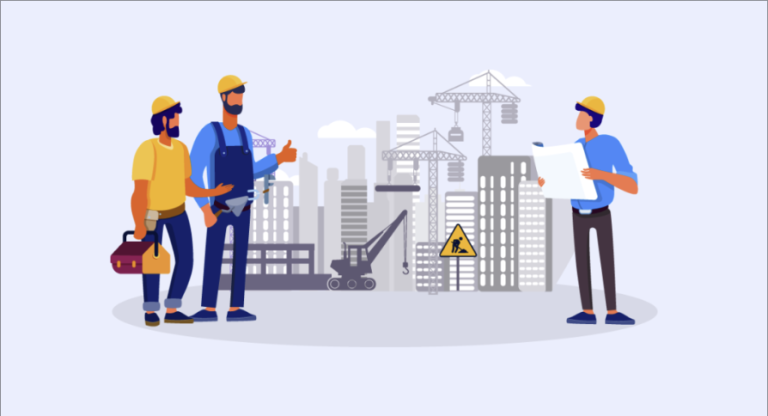Construction projects are inherently complex and can present numerous dangers if not managed properly. The nature of the work involves both physical hazards on-site and various logistical challenges that need careful attention.
Without proper precautions and risk management, these dangers can lead to accidents, delays, or financial losses. Understanding the most common risks and knowing how to address them is key to running a successful and safe construction project.
Physical Hazards on Construction Sites
One of the most obvious risks in construction comes from the physical environment itself. Workers often face dangerous situations involving heavy machinery, working at heights, and handling hazardous materials.
Falls are a major concern on many sites, whether from scaffolding, ladders, or unfinished structures. Inadequate safety equipment or poorly maintained scaffolds can increase the likelihood of accidents. Protective measures such as harnesses and guardrails should always be in place to mitigate this risk.
Machinery and equipment also pose a constant threat. Workers operating cranes, diggers, and other heavy machinery must be well-trained to avoid mistakes that could lead to injury or damage to property.
Even smaller tools, if mishandled, can cause harm. Regular maintenance of machinery is vital to avoid breakdowns that can lead to accidents, and workers must be trained on the proper use of all equipment to prevent accidents caused by human error.
Electrical hazards are another common issue on construction sites. Exposed wiring, faulty equipment, or poor electrical installations can lead to electrocution or fires.
Regular inspections of electrical systems and ensuring all workers understand the risks can help reduce the chance of serious incidents.
Weather and Environmental Conditions
Weather can create significant risks in construction projects. Rain, snow, and ice can make surfaces slippery, increasing the risk of falls.
High winds can make working at heights more dangerous, especially when handling large or lightweight materials. Even in good weather, working outdoors means dealing with heat or cold that can impact worker health and productivity.
Poor site conditions, such as unstable ground, can lead to structural collapses or landslides in certain cases. Sites must be carefully prepared, and groundwork needs to be stabilised before building begins. Regular inspections are essential to monitor the condition of both the site and ongoing construction work, identifying and addressing potential hazards before they escalate.
Lack of Proper Training
A poorly trained workforce can be one of the biggest dangers in any construction project. Workers need to understand not only how to do their jobs but also the safety precautions that must be taken in the process.
Inadequate training increases the risk of accidents and can lead to mistakes that delay the project or cause financial losses.
Comprehensive training programmes should cover both the use of equipment and the specific safety risks present on each site. For example, workers should be trained on how to handle hazardous materials safely and how to use personal protective equipment effectively.
Ongoing safety training and refreshers ensure that workers stay aware of changing risks throughout the project.
Risk Management in Construction
Every project has potential risks, whether related to safety, finances, or logistics. Effective risk management involves identifying these risks early and putting strategies in place to reduce their impact.
In construction, this might mean scheduling work around predicted weather conditions, ensuring that equipment is maintained and used correctly, and making sure all workers are trained on safety procedures.
Contingency plans should also be developed to deal with unforeseen circumstances, such as delays caused by bad weather or material shortages.
Good communication across all levels of the workforce is essential for effective risk management. Supervisors and project managers need to be aware of what’s happening on the ground so they can respond quickly to any issues that arise.
Regular site meetings and safety briefings help keep everyone on the same page and minimise misunderstandings that could lead to accidents or delays.
Financial and Logistical Risks
Beyond the physical dangers, construction projects face financial and logistical risks that can affect their success. Cost overruns are a common problem, often caused by unforeseen issues such as rising material costs, delays, or mistakes made during construction.
Careful budgeting and planning help to minimise the risk of financial problems, but flexibility is also important to adapt to unexpected challenges.
Logistical issues, such as delays in the delivery of materials or problems with subcontractors, can also derail a project. Risk management in construction involves creating schedules that allow for some flexibility and building relationships with reliable suppliers to avoid disruptions.
The Overall Roundup
Construction projects involve a wide range of risks, from physical hazards to financial and logistical challenges. Managing these risks effectively is essential for completing projects safely, on time, and within budget.
Regular inspections, proper training, and a strong risk management strategy can help to minimise these dangers and keep your construction site running smoothly.
Understanding the potential risks and taking steps to reduce them is key to the long-term success of any construction project.


